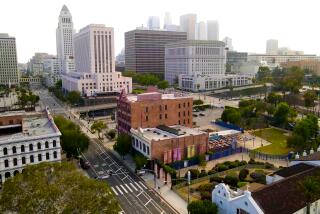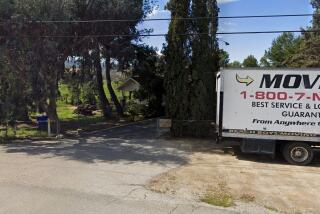Diocese Says Discovery of Remains at Mission Won’t Change Project
- Share via
The discovery of remains believed to be those of three American Indians near Mission San Diego de Alcala will not alter the Catholic Diocese of San Diego’s plans to go ahead with construction of a meeting hall, a diocese spokesman said Tuesday.
“We intend to continue,” said Dan Pitre, diocese director of communication. “The diocese does not consider this find significant enough to change our construction plans.”
The bones were found two weeks ago during an archeological excavation undertaken as part of an agreement with the city that granted the diocese permission to build an 8,000-square-foot multipurpose building on the site of California’s oldest mission.
Raises Questions
The discovery raises questions about the diocese’s claim that the area where the hall is to be built had been throughly examined during 18 years of excavation by University of San Diego faculty and students. The diocese also said that nothing of historical significance remained to be uncovered.
The find cannot halt the project because the agreement with the city does not call for construction to be halted if historical artifacts are found, said Ron Buckley, senior planner in the city Planning Department.
Buckley said the bones are believed to be those of some of the first American Indians to be buried at the mission, which was founded in Presidio Park in 1769 by Father Junipero Serra and moved to its current site in Mission Valley five years later. Buckley said the bones are believed to have been buried on the mission grounds about 1780 and then disturbed during further mission construction in the early 1800s.
Archeologists found three skulls, teeth and shoulder and thigh bones in a hole about 5 feet deep. The pit was excavated where a concrete foundation piling for the meeting hall is planned, Buckley said.
The meeting hall has been a controversial project since the diocese proposed it in 1978 as a way of easing overcrowding at the mission. Protests from historical groups and opposition from the San Diego Historical Site Board delayed the project for several years. But it was approved last fall under a plan in which the building would be kept above ground by concrete pillars, making later excavations possible.
The agreement calls for the additional archeological work to be undertaken in areas surrounding holes to be dug for pilings, foundations, utility lines and irrigation trenches.
About five of the 20 planned piling holes have been examined by the archeologists since the project began almost a month ago, Buckley said. He said it would take a total of about 90 days to complete the excavation and that construction cannot begin before then.
More to Read
Sign up for Essential California
The most important California stories and recommendations in your inbox every morning.
You may occasionally receive promotional content from the Los Angeles Times.













![Vista, California-Apri 2, 2025-Hours after undergoing dental surgery a 9-year-old girl was found unresponsive in her home, officials are investigating what caused her death. On March 18, Silvanna Moreno was placed under anesthesia for a dental surgery at Dreamtime Dentistry, a dental facility that "strive[s] to be the premier office for sedation dentistry in Vitsa, CA. (Google Maps)](https://ca-times.brightspotcdn.com/dims4/default/07a58b2/2147483647/strip/true/crop/2016x1344+29+0/resize/840x560!/quality/75/?url=https%3A%2F%2Fcalifornia-times-brightspot.s3.amazonaws.com%2F78%2Ffd%2F9bbf9b62489fa209f9c67df2e472%2Fla-me-dreamtime-dentist-01.jpg)